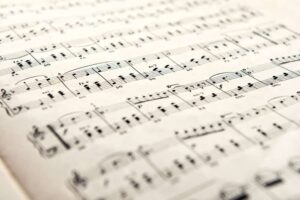 Regardless of what instrument you’re learning how to play, you’ll need to know how to read notes and understand their durations. This is one of the fundamentals of music, and it’s necessary for anyone who wants to play. Your child will learn notes and their durations on private music lessons in Atlanta, but they may need your help in practicing them. As their piano instructor is likely to explain, it’s important to fully master these notes and understand them before moving on to more advanced lessons. Let’s take a look at these four basic notes.
Regardless of what instrument you’re learning how to play, you’ll need to know how to read notes and understand their durations. This is one of the fundamentals of music, and it’s necessary for anyone who wants to play. Your child will learn notes and their durations on private music lessons in Atlanta, but they may need your help in practicing them. As their piano instructor is likely to explain, it’s important to fully master these notes and understand them before moving on to more advanced lessons. Let’s take a look at these four basic notes.
What Is Duration?
In musical terms, duration is how long the note is held. Instead of measuring this in seconds or other units of time, it’s measured in beats or counts. It’s important to note that a beat isn’t the same as a second. In your private piano lessons you’d learn, that it’s related to the tempo of the song. The tempo is how fast or slow the beats are. In a song that’s really fast, the beats are likely less than a second. In slow songs, though, they’re likely longer.
The Quarter Note
The shortest note is the quarter note. It gets its name because it’s one-quarter of a whole note. It’s held for one beat, so it’s often considered the base note that you use to set the beat. You can help your child learn to play quarter notes by clapping out the counts of a measure. For each clap, they play the quarter note. There are a number of other games that can help your child learn rhythm and beats, too.
On sheet music, a quarter note is shown as a black circle with a line drawn up off of it on the right side. It looks kind of like a hockey stick.
The Half Note
Next is the half note. It’s double the quarter note, but only half of the whole note. A quarter note is held for two beats. When your child is counting out the beats, they will play the half note for two counts instead of one. In a measure with four beats, four quarter notes would be beat 1, 2, 3, 4. If that measure has two half notes, however, the first would be beat 1 and 2 while the second half note would be played for both beats 3 and 4.
The Dotted Half Note
The dotted half note looks like a half note with a little dot by the stem. That little dot adds half of the beat to the note. In this case, the half note has two beats by itself. The dot is equal to half of those beats, so it’s another beat. A dotted half note, then, has three beats to it. Your child may find it easier to think of it as a half note and a quarter note to start with.
It’s possible to have many other dotted notes, including dotted quarter notes that are counted for one and a half beats.
The Whole Note
The whole note has the longest duration. It’s held for four beats. On sheet music, a whole note is depicted as a hollow circle without any stems or other additions. When playing a whole note in a measure, the whole note gets all four beats. It’s possible to have a dotted whole note, which would be equal to a whole note and a half note. Again, though, that’s best saved for a more advanced lesson.
Need a Teacher?
If your child is ready to learn the piano or any other instrument, you want to make sure they have the best teacher possible. Our teachers will come right to your home for every lesson, plus we offer virtual music lessons, too. However, our online music lessons are being taught by local music teachers with live lessons tailored to your child! So whether you’re looking for online teachers to teach Atlanta piano lessons or if you want Houston piano lessons, we got you covered! Contact us today to learn more.